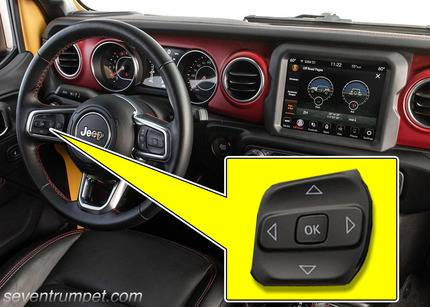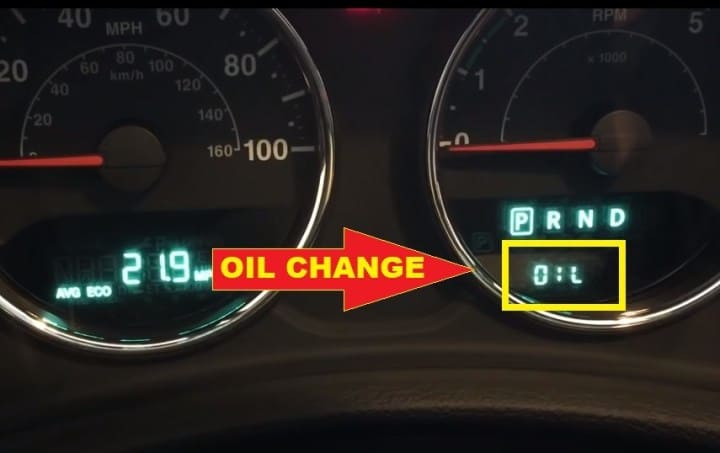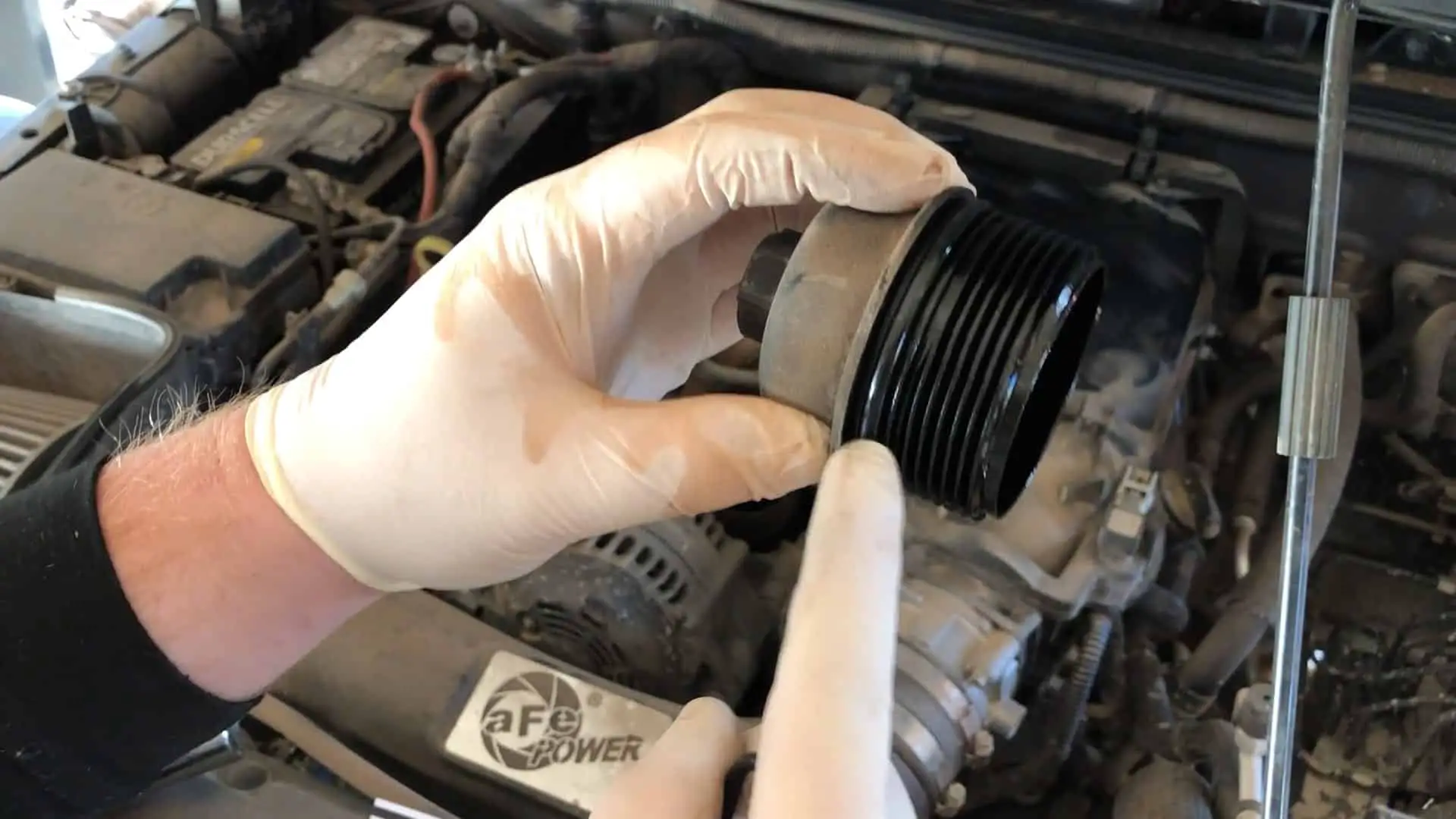- Oil change jeep wrangler
- 2018-2023 Jeep Wrangler Oil Life/Oil Change Light Reset Guide
- The Easy Way To Reset Oil Life in Jeep Wrangler (2018-2023)
- Another Way to Reset Oil Change Light on Jeep Wrangler JL
- What Effect Do Oil Additives Have on Your Car Engine?
- Anti-Oxidant
- Zinc
- Detergents
- Dispersants
- FAQ – Oil Change Required
- About The Author
- Jeep Wrangler Oil Change: How to Tutorial
- Required Tools
- Step 1: Removing the Engine Cap
- Step 2: Drain the Used Oil
- Step 3: Change the Oil Filter
- Step 4: Tighten Drain Plug
- Step 5: Add New Oil
- Step 6: Finish Up
Oil change jeep wrangler
На 11000 пробега появилось сообщение «Oil change required» или как-то так. Позвонил в Мэйджор, говорят, пора на ТО.
Хорошо, приехал. ТО сделали.
Просил перепрограммировать ближний свет, чтобы горел все время и не нужно было выключать вручную — это они не смогли. Невозможно, говорят.
Поправить лифт водительского сиденья, чтобы не опускался самопроизвольно тоже не смогли.
И сообщение о замене масла не погасили.
Вопрос к джиповодам.
Как погасить сообщение о замене масла?
Если есть советы по остальным двум проблемам, тоже буду рад.
Мне в мейджоре сразу сказали, у нас ренги только покупают, иногда меняют по гарантии фары, еще реже что то ремонтируют
Чтобы погасить сообщение о замене масла, нужно, включить зажигание и три раза(плавно) нажать до упора педаль газа.
Чтобы погасить сообщение о замене масла, нужно, включить зажигание и три раза(плавно) нажать до упора педаль газа.
можно и не очень плавно — главное уложиться в 10 секунд и потом выключить зажигания не заводя.
ближний свет всегда можно получить включив авто режим и залепив датчик освещенности на панели чем нибудь непрозрачным 😀
или купить программатор и включить им европейский свет.
сидушка — это конструктивная проблема — она не опускается только когда под нагрузкой — если машина долго стоит то сидушка опускается — как это решить пока не придумал
Спасибо за советы.
С датчиком света я так и поступил. Интересно, этот датчик отвечает только за включение света или, как на некоторых автомобилях, меряет и степень освещенности (нагрева) зоны под лобовым стеклом и передает информацию в климат-контроль?
А где можно купить программатор? Или, может, у кого-то уже есть? С меня пиво, если что.
2018-2023 Jeep Wrangler Oil Life/Oil Change Light Reset Guide
Hey guys, what’s up. I just finished changing the engine oil in my car. So now I’m going to show you how to reset the oil life or oil change required minder light on my Jeep Wrangler. When the light comes up and says, you know, oil change or whatever it is, I’ll show you how to get rid of that.
It’s a little bit of a procedure, and it’s a little different than many other vehicles. You press a button and scroll through a few screens, but I’ll show you how to get past and reset it. So let’s jump right into that.
The Easy Way To Reset Oil Life in Jeep Wrangler (2018-2023)
This is the quickest and most common way to reset oil life on all Jeep cars. So let’s going to reset the oil change indicator with these simple steps:
- Turn the ignition keys to the RUN position or press the START button twice without turning the engine
- Once you’ve done that, the lights will flash, and you have 10 seconds when you need to step on the GAS pedal three times.
- Once you do that, you can remove your keys from the ignition, which should be reset.
Another Way to Reset Oil Change Light on Jeep Wrangler JL
- We need to turn the ignition to the RUN position
Once you have your ignition in the run position, we will use the buttons on the left-hand side of the steering wheel, and we will scroll down until we see the Vehicle Info screen.

For your info, this operation work for the Jeep Wrangler JL (2018, 2019, 2020, 2021, 2022, and 2023 model years). For the older ones, you can reach it here.
What Effect Do Oil Additives Have on Your Car Engine?
Engine oils are complicated, and they include all kinds of different additives which are important for your engine’s health. So this is not a complete list of all the additives you can expect to find in oil, but we will touch on some of the major ones here.
So we’re going to work through different additives, talk about what they are, what they are used for within the oil, and then what the consequence is of, you know, using that oil for far too long and not changing it on time.
Anti-Oxidant
The first one is anti-oxidants, and oxidation is the primary cause of oil degradation. The anti-oxidants are super important in reducing that rate of oxidation. So the consequence of waiting too long is that this oil starts to break down more and more, losing its effectiveness, and you have an increase in wear on your engine.
Zinc
We also have anti-wear additives; for example, zinc can be used to do this. These zinc additives help react with rough surfaces to create a sacrificial barrier and help smooth out that surface to reduce the friction and amount of wear you have.
So over time, it loses its effectiveness as you use that zinc and remove those sacrificial barriers. Of course, you’ll have more wear if you have something preventing wear that goes away, or it’s not as effective anymore you have more wear.
Detergents
Detergents are very important for preventing corrosion within the engine and helping to prevent sludge from building up within the engine. So over time, as that sludge builds up and your detergents begin to lose effectiveness, well, that sludge can get within passageways and reduce oil flow. So if you reduce that oil flow through those passageways, you’re getting less oil through them, less protection, increasing friction, and increasing wear.
This can also lead to a decrease in the effectiveness of your detergents. You can have excessive carbon deposits starting to form within your engine.
Dispersants
Also helping to prevent carbon deposits, we have dispersants. The dispersants are really cool. They’ll actually surround deposit precursors. They’ll attach themselves to it and suspend that deposit precursor within the oil, so it just circulates within the engine. Perhaps the filter will be able to filter it out; if not, it just continues to spread within that engine but doesn’t attach to anything and form a harmful carbon deposit.
So these dispersants help to suspend that deposit, and in doing so, you don’t have those deposits forming within your engine. Of course, the longer you wait, the more these you know deposit precursors will be held within your engine. So if you don’t change it out well, you’ve got all those deposits floating around in your oil just waiting to attach to something, and you’ve never actually removed all those deposits from your engine.
It’s actually a good thing, you know to see that dark oil coming out. It means you’re removing all those contaminants when you change the oil. However, you don’t want those contaminants in there forever, so you need to change your oil on time.
FAQ – Oil Change Required
Full synthetic oil is advised to be used in a 2019 Jeep Wrangler. The 2.0L 4 -cylinder turbo operates best on SAE 5W-30 and carries 5 quarts of oil. The 3.6L V6 engine uses SAE 0W-20 and can take 5 quarts.
The cost of a Jeep wrangler’s tune-up may range from $150 to $500, depending on the work required. Changing the spark plugs is likely to cost more than the lower end of that range.
On a Jeep Wrangler, the valve cover gaskets are a typical source of oil leakage from the engine’s front end. An oil-covered valve cover or a burning oil smell while the engine is running are obvious signs of a valve cover gasket failing to seal.
So there you have it, simple, straightforward, but some people are unaware of how to get it done. It would help if you did this when changing the oil in your Jeep. So you can ensure that you are getting the proper counter for the next oil change. So you’re maintaining the appropriate maintenance of your Jeep Wrangler JL. Until next time, See you.
About The Author
jacob
Hi! I’m Jacob. For ten years, I ran a repair business. I have been interested in automobiles since he was a child and spends all of my spare time assisting my father in his garage. I like providing others with useful info.
Jeep Wrangler Oil Change: How to Tutorial
If you own a Jeep Wrangler, it is an essential to change its engine oil regularly. The best thing about changing a jeeps engine oil is that you can do it by yourself and it requires just a few tools.
In some modern jeep engines, for instance, the 3.6L V6 Pentastar engines use the disposable filter media that make oil change procedure very easy.
If you think it’s time to change your jeep’s engine oil, you can follow the following steps to make your work easier and error-free.
Required Tools
Step 1: Removing the Engine Cap
The engine cap is a removable plastic cap covering the top of your jeeps engine. This cap is easy to remove because it is not bolted. Simply grab and pull it up with your hands. After removing the cap, you will see the oil filter and an oil filter cap. These are the ones you need to access to do an oil change.
Step 2: Drain the Used Oil
Place your oil drain container under your jeep to collect the used oil. With the 13mm socket ratchet, loosen the drain bolt and be careful to avoid opening it completely.
Remove the drain bolt with your fingers and allow the oil to splash into the correcting pan. The oil flows out using gravity, and in some cases, it may take some time before the oil starts flowing out. You can hold the correcting pan closer to the draining plug to avoid splashing.
Step 3: Change the Oil Filter
While the oil is draining out of your jeep engine, you can start replacing your oil filter. Using a 24mm socket, loosen and remove the oil filter using your hand.
You can use a piece of cloth to clean oil from the oil cap just in case the used oil drops from the filter. Then gently pull the cap to separate it from the filter.
Use the flat-head screwdriver to open the o-ring at the top of the oil cap. New oil filters come with replacement rings. Replace the O-ring with the new one on your oil filter.
Dip a clean piece of cloth or your finger into the new oil and rub it on the ring and plastic threads on your oil cap. Smoothly push the new oil filter into oil cap until it fits perfectly. After installing the filter into the cup, return the cup gently into position.
Step 4: Tighten Drain Plug
Go under you jeep and with your fingers roll the oil drain plug into position. For torque tightening requirements, you can refer to your users guide for more information. Use a piece of clean cloth to wipe the surface of the oil pan to prevent dust and dirt from sticking on it.
Step 5: Add New Oil
Finally, it is time to add new oil into your jeeps engine. Unscrew and remove the oil filter cap. The oil filter cup is located on the driver’s hand side and can be easily removed with hands.
Start adding oil into the jeeps using a funnel. The amount and viscosity of oil that you will add depends on your jeeps model.
You can refer to the users manual for more information. If for instance, if your jeep model requires six quarters of oil, you can start by adding five quarters.
Start the engine and allow the oil to circulate to all part. Stop the engine and now add the last one quarter until full.
Step 6: Finish Up
After adding the oil, clean and store your tools in a safe place. You can use a flashlight to check if everything is working as expected; all bolts are tight, and no oil is leaking.
Now that you have successfully changed your Jeep Wrangler engine oil, you can start recording your mileage and set a reminder for the next oil change. There are plenty of applications for monitoring mileage and maintenance records to choose from.



